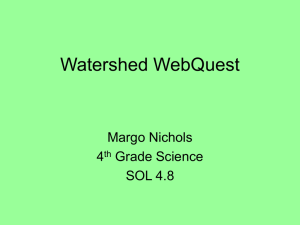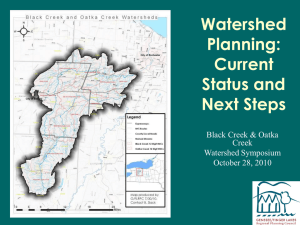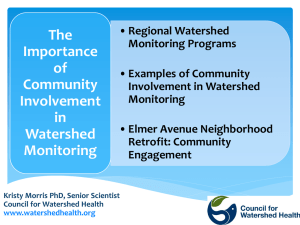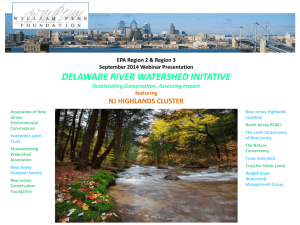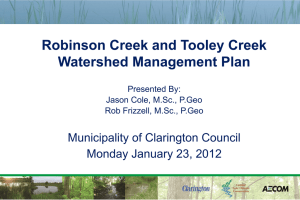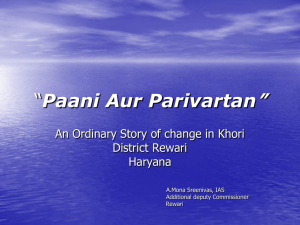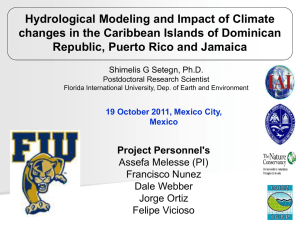Watersheds and Watershed Planning
advertisement
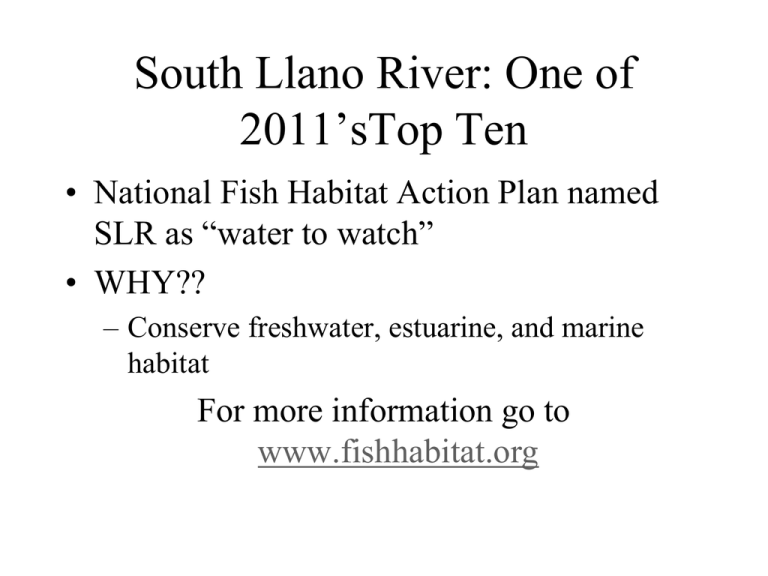
South Llano River: One of 2011’sTop Ten • National Fish Habitat Action Plan named SLR as “water to watch” • WHY?? – Conserve freshwater, estuarine, and marine habitat For more information go to www.fishhabitat.org Guadalupe Bass Initiative • Central Texas endemic (streams of the Edwards Plateau region) • State Fish of Texas • Declining numbers – Decreased stream flow – Habitat degradation – Hybridization with smallmouth bass A Watershed • An area that drains to a common waterway, such as a stream, lake, estuary, wetland, aquifer, or even the ocean. Source: http://water.epa.gov/type/watershed s/index.cfm What Does a Watershed Look Like? • There are watersheds of all types – They can include farmland, rangeland, small towns or large cities – They can be only a few acres to millions of square miles – Watershed have four major features: uplands, floodplains, riparian zones, and water-bodies Source: Texas Watershed Stewardship Program Workshop April 2010 WE ALL LIVE IN ONE!! Uplands • Area of land above a water-body – Typically forms watershed boundaries – Provides habitat for wildlife, minimizes soil erosion and acts a filter Source: Texas Watershed Stewardship Program Workshop April 2010 Floodplains • Flat land that surrounds a water-body that is prone to flood events – Traps excess water – Filters sediment – Provides habitat for wildlife Source: Texas Watershed Stewardship Program Workshop April 2010 Riparian Zone • “River Bank” • Interface between land and water-body – Filters sediment and surface runoff – Minimizes soil erosion – Provides habitat for wildlife Source: www.wikipedia.org Water-Body • Stream, river, pond, lake, reservoir, estuary, bay, or ocean • Flowing (lotic) or non-flowing (lentic) • Influence and affected by soil, slope, vegetation and topography Source: Texas Watershed Stewardship Program Workshop April 2010 Watershed hydrology • Hydrology is the study of water • 70% of the Earth’s surface is water • Water continually cycles through a process known as the water cycle The Water Cycle Where Does the Rain Go? • Runoff • Absorb by plants and used for photosynthesis • Infiltrate soil and percolate down into groundwater aquifers • Evaporation • Trapped in ice caps, glaciers, lakes, and reservoirs Source: Texas Watershed Stewardship Program Workshop April 2010 Land Use/Land Cover • Land use is how WE use the land – Agriculture, industry, urban, recreation • Land Cover is the physical and biological features – Forests, grassland, rivers, buildings • Changes can effect watershed function Watershed Functions • Hydrological – Water capture: captured from rainfall and infiltrates into soil – Water storage: stored in areas between soil particles and soil profile – Water release: released underground, through soil, or across land Source: Texas Watershed Stewardship Program Workshop April 2010 Watershed Functions • Ecological – Provides areas for nutrient transformation found in air, water, and soil – Provides habitat for plants and wildlife Source: Texas Watershed Stewardship Program Workshop April 2010 Benefits of a Watershed Approach • Hydrologically and geographically defined – Considers many stressers (air, water, land) • Includes all stakeholders – Agencies (federal, state,& local) – Community-based • Identifies and prioritizes water resource issues (e.g. water quality, water quantity, invasive species) Source: http://water.epa.gov/typ e/watersheds/approach.c fm What is a Watershed Conservation Plan? • Helps identify and prioritize issues facing the watershed • Framework for community participation in land and water management with regard to issues • Guide restoration efforts with regard to important species (e.g. Guadalupe Bass) So, Why the Upper Llano River Watershed? • EPA’s Healthy Watersheds Initiative – Collaborative systems-approach to protecting healthy watersheds • Why do it? – Provides clean water for healthy ecosystems – Habitat for fish and wildlife – Drinking water – Recreational opportunities – Reduces vulnerability from negative impacts (e.g. land use changes, exotic & invasive species)


